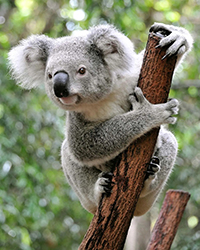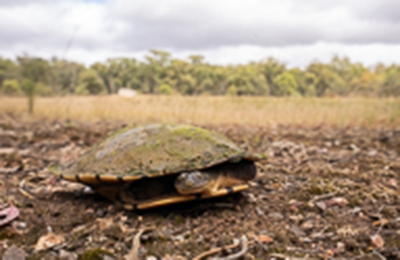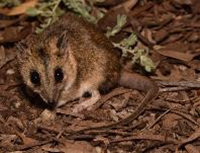Australian Journal of Zoology
Volume 71
Number 6 2023
The iconic koala population in Australia faces alarming decline due to human-induced threats. This study analyses koala admissions to the Port Macquarie Koala Hospital, revealing that dangerous areas and motor vehicle accidents account for almost half of the cases. Additionally, diseases like chlamydia pose a significant risk, particularly for mature koalas. Urgent action is needed to address these anthropogenic impacts, emphasising public education, reporting, and disease management. These findings provide crucial insights to conserve and protect this beloved Australian species. Photograph from https://www.britannica.com/animal/koala.
Reptile physiology is heavily influenced by a range of external factors, one of which is environment. In this investigation it was shown that turtles originating from two different ponds, separated by only 200 m, had significantly different blood parameters and body conditions. This research highlights the need to consider location when assessing health and physiology in reptile species. Photograph by Titus Franciscus Scheelings.
A suspected stripe-faced dunnart (Sminthopsis macroura) was captured at a coastal dune site near Eucla, Western Australia. The identity of the specimen was corroborated through DNA sequencing and morphological examination. This represents a range extension into novel habitat for the species in southern Western Australia. Photograph by Joshua Keen, Biota Environmental Sciences.








